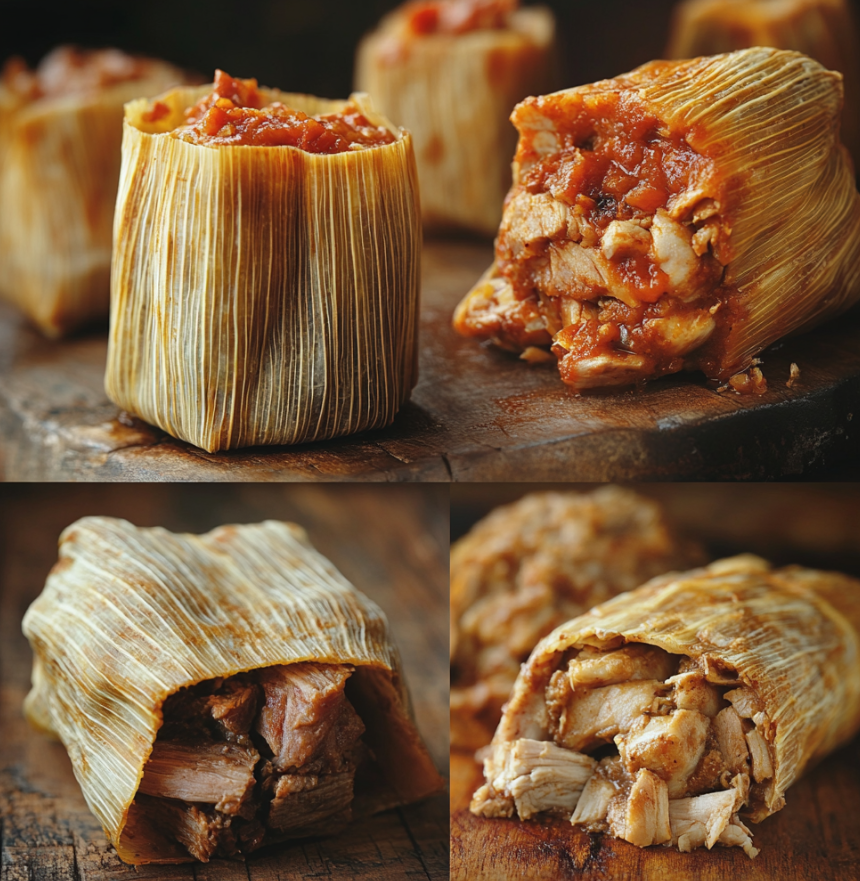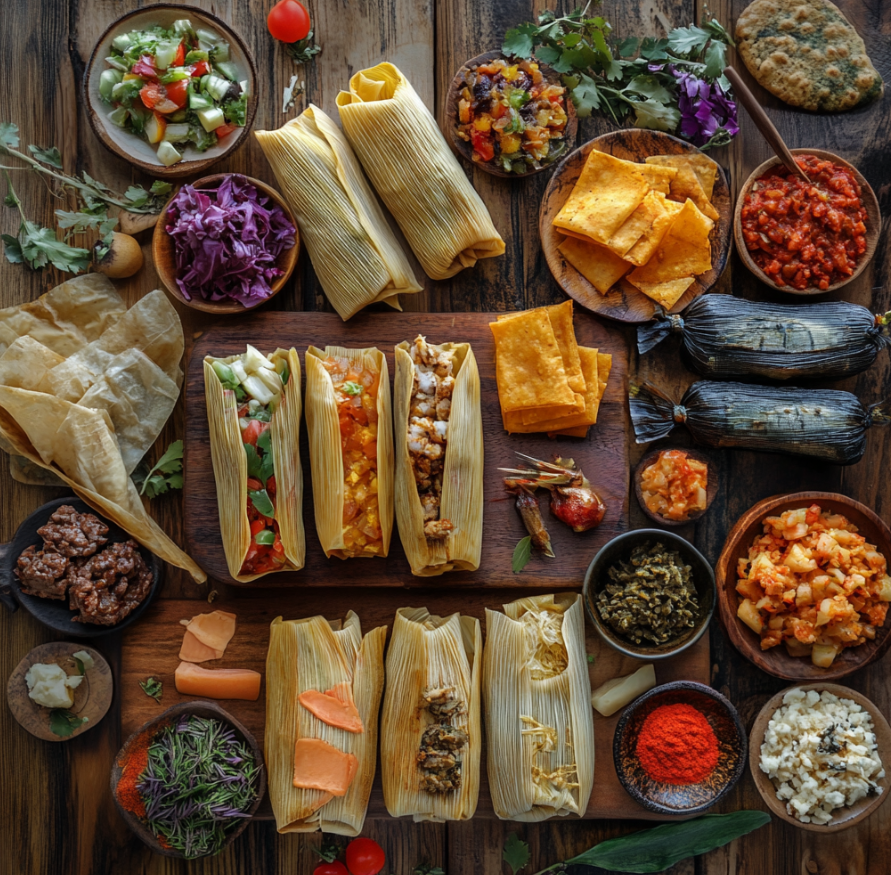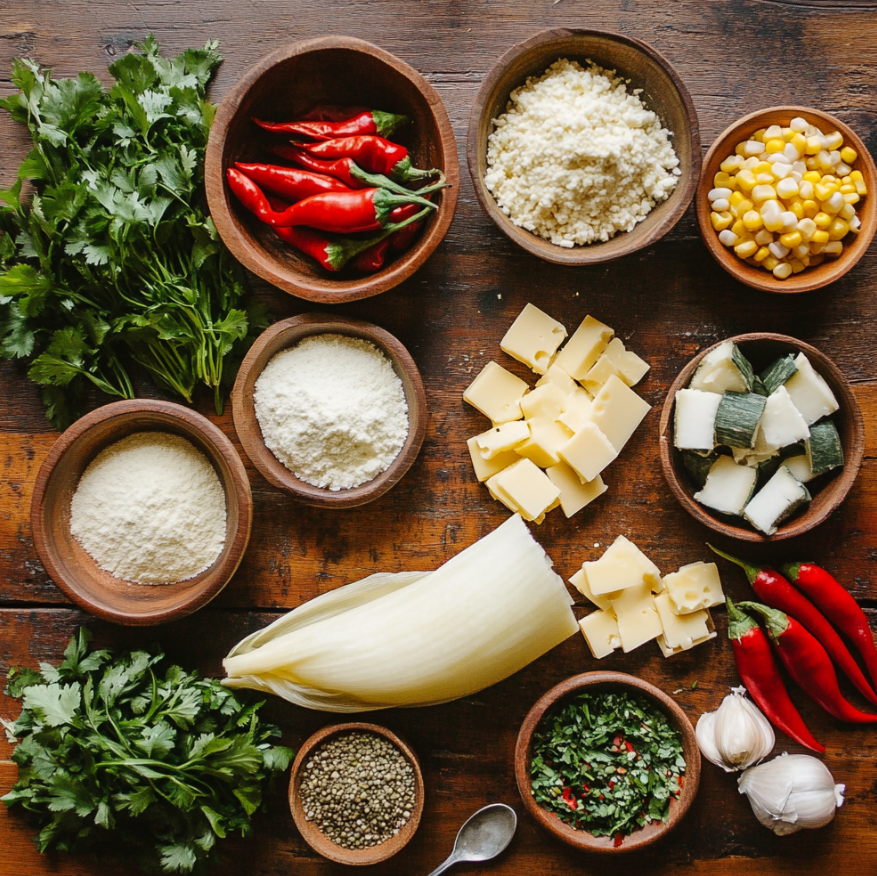Tamales are a cornerstone of Latin American cuisine, celebrated for their rich flavors and comforting textures. A key component of any tamale is the filling, which can range from savory meats to sweet fruits, and everything in between. But what exactly is tamale filling made of? In this article, we’ll dive into the ingredients that make up traditional and modern tamale fillings, offering insights into how to craft the perfect tamale.
Traditional Tamale Fillings
At the heart of a tamale is its filling, which traditionally includes a variety of flavorful ingredients. These fillings not only reflect the cultural heritage of the dish but also vary by region, making tamales a versatile and adaptable food.
Meat-Based Fillings
- Pork with Red Chile Sauce: This classic filling is a staple in many Mexican tamales. The pork is slow-cooked until tender, then mixed with a rich and spicy red chile sauce. The result is a deeply flavorful filling that’s both savory and slightly smoky.
- Chicken with Green Chile Sauce: A lighter alternative to pork, chicken paired with a tangy green chile sauce offers a fresh and vibrant flavor. The sauce, made from roasted green chiles, adds a subtle heat that complements the mildness of the chicken.
- Beef with Mole Sauce: In some regions, beef is shredded and mixed with mole sauce, a complex mixture of chiles, chocolate, and spices. This combination creates a rich, savory filling that is both hearty and deeply flavorful.
For more traditional tamale recipes that include these classic fillings, check out Traditional Tamale Recipes.

Regional Variations in Tamale Fillings
Tamales are incredibly versatile, and their fillings can vary greatly depending on the region. Different areas have their own traditional fillings that showcase local ingredients and flavors.
Mexico
- Pork and Green Chile: Especially popular in northern Mexico, this filling combines tender pork with tangy green chile. The contrast between the meat’s richness and the chile’s acidity creates a balanced and satisfying flavor.
- Sweet Tamales with Fruit Fillings: In southern Mexico, sweet tamales filled with fruits like pineapple or raisins are common. These tamales are often served as a dessert, offering a sweet contrast to the savory versions.
Central and South America
- Humitas in Peru and Ecuador: Similar to tamales, humitas are a popular dish in Peru and Ecuador. These are typically filled with fresh corn, cheese, and sometimes sweet ingredients like raisins.
- Tamales with Fish in Coastal Regions: In coastal areas, tamales filled with fish or seafood are popular. The light, fresh flavor of the fish pairs beautifully with the soft masa, making these tamales a favorite near the ocean.
United States
- Tex-Mex Tamales with Spicy Beef and Cheddar Cheese: In the U.S., particularly in Texas, tamales often take on a Tex-Mex flair. Spicy beef paired with melted cheddar cheese is a filling that reflects the bold, vibrant flavors of the region.
These regional variations highlight the adaptability of tamales, showing how they can be tailored to different tastes and ingredients. For a deeper dive into these variations, explore this Guide to Different Tamale Fillings.

Common Ingredients in Tamale Fillings
Regardless of the type of tamale, certain ingredients are commonly used to create a cohesive and flavorful filling. These ingredients are essential to achieving the right balance of taste and texture in a tamale.
- Masa (Corn Dough): Masa is the foundational ingredient in tamales. Made from nixtamalized corn, it provides the soft, doughy texture that wraps around the filling. While not part of the filling itself, masa is integral to the overall tamale.
- Sauces and Seasonings: The use of sauces like mole, salsa verde, and chile sauces adds depth to tamale fillings. These sauces not only provide moisture but also infuse the filling with rich, complex flavors.
- Cheese: Cheese is often included in tamale fillings, especially in vegetarian versions. It melts during cooking, adding creaminess and binding the other ingredients together.
Understanding these common ingredients will help you appreciate what makes a tamale filling truly delicious.

Modern and Creative Tamale Fillings
While traditional fillings hold a special place in tamale-making, modern twists are becoming increasingly popular. These creative fillings bring new flavors and textures to the classic dish, appealing to contemporary tastes.
Fusion Tamales
- Korean BBQ Pork Tamales: This fusion filling combines the savory, sweet, and spicy elements of Korean BBQ with traditional tamale masa. The marinated pork brings a bold flavor that pairs surprisingly well with the masa.
- Tamales with Curried Vegetables: Inspired by Indian cuisine, these tamales feature curried vegetables like potatoes, carrots, and peas. The warm spices of the curry add a unique twist to the traditional tamale, making it a flavorful and satisfying option.
Healthy Alternatives
- Quinoa and Black Bean Tamales: For a healthier take, quinoa and black beans make an excellent filling. High in protein and fiber, this filling is not only nutritious but also delicious, offering a modern alternative to traditional meat-based tamales.
These modern fillings showcase how tamales can be adapted to fit a variety of tastes and dietary preferences.
Vegan and Gluten-Free Tamale Fillings
For those with dietary restrictions, tamales can easily be made vegan or gluten-free without sacrificing flavor.
Vegan Fillings
- Jackfruit with BBQ Sauce: Jackfruit is a popular meat substitute that works exceptionally well in tamales. When cooked with BBQ sauce, it mimics the texture and flavor of pulled pork, making it a satisfying vegan option.
- Mushrooms with Chipotle Sauce: Mushrooms, particularly portobello or shiitake, provide a meaty texture that is perfect for vegan tamales. When paired with a smoky chipotle sauce, this filling is rich and full of umami.
Gluten-Free Options
- Fillings with Gluten-Free Masa: Most tamales are naturally gluten-free, but it’s important to use certified gluten-free masa if you have sensitivities. Fillings like beans, cheese, and vegetables are naturally gluten-free and pair well with gluten-free masa.
- Use of Rice Flour in the Dough: Some tamale recipes use rice flour instead of masa to create a different texture. While not traditional, this method offers a unique twist for those looking to experiment with tamales.
These vegan and gluten-free options ensure that everyone can enjoy tamales, regardless of dietary restrictions.
Tips for Choosing the Right Filling
Choosing the right filling for your tamales can elevate them from good to great. Here are some tips to help you make the best choice:
- Pair Fillings with Sauces: Choose a sauce that complements your filling. For example, a spicy filling pairs well with a cooling crema, while a mild filling might benefit from a more robust salsa.
- Balance Textures and Flavors: A great tamale filling balances different textures, such as the creaminess of cheese with the crunch of vegetables, and flavors, such as the richness of meat with the brightness of salsa.
- Adapting Traditional Fillings: Don’t hesitate to adapt traditional fillings to suit your preferences. Add more chiles for spice, or incorporate different vegetables for added texture.
For more tips on making tamales, including filling ideas, visit Tamale-Making Tips and Tricks.
FAQs About Tamale Fillings
What are the most common tamale fillings? The most common tamale fillings include pork with red chile sauce, chicken with green chile sauce, and beans with cheese.
Can tamale fillings be made ahead of time? Yes, tamale fillings can be made ahead of time and stored in the refrigerator for up to two days before using them.
How do you store leftover tamale fillings? Store leftover tamale fillings in an airtight container in the refrigerator. They can be kept for up to three days.
Can I freeze tamale fillings? Yes, most tamale fillings can be frozen. Place them in a freezer-safe container and store them for up to three months.
What’s the best way to reheat tamale fillings? Reheat tamale fillings on the stovetop
